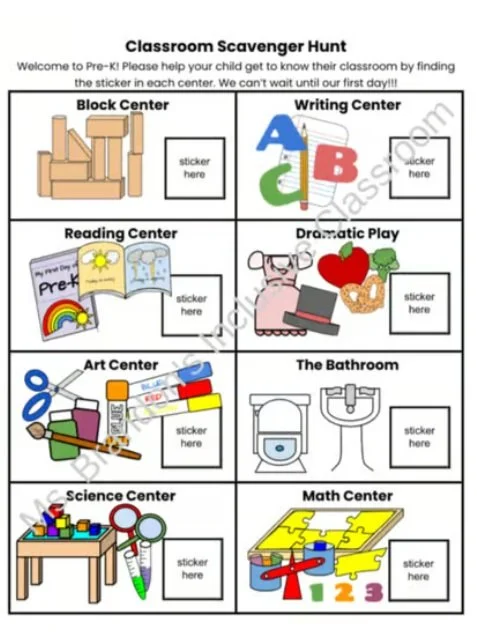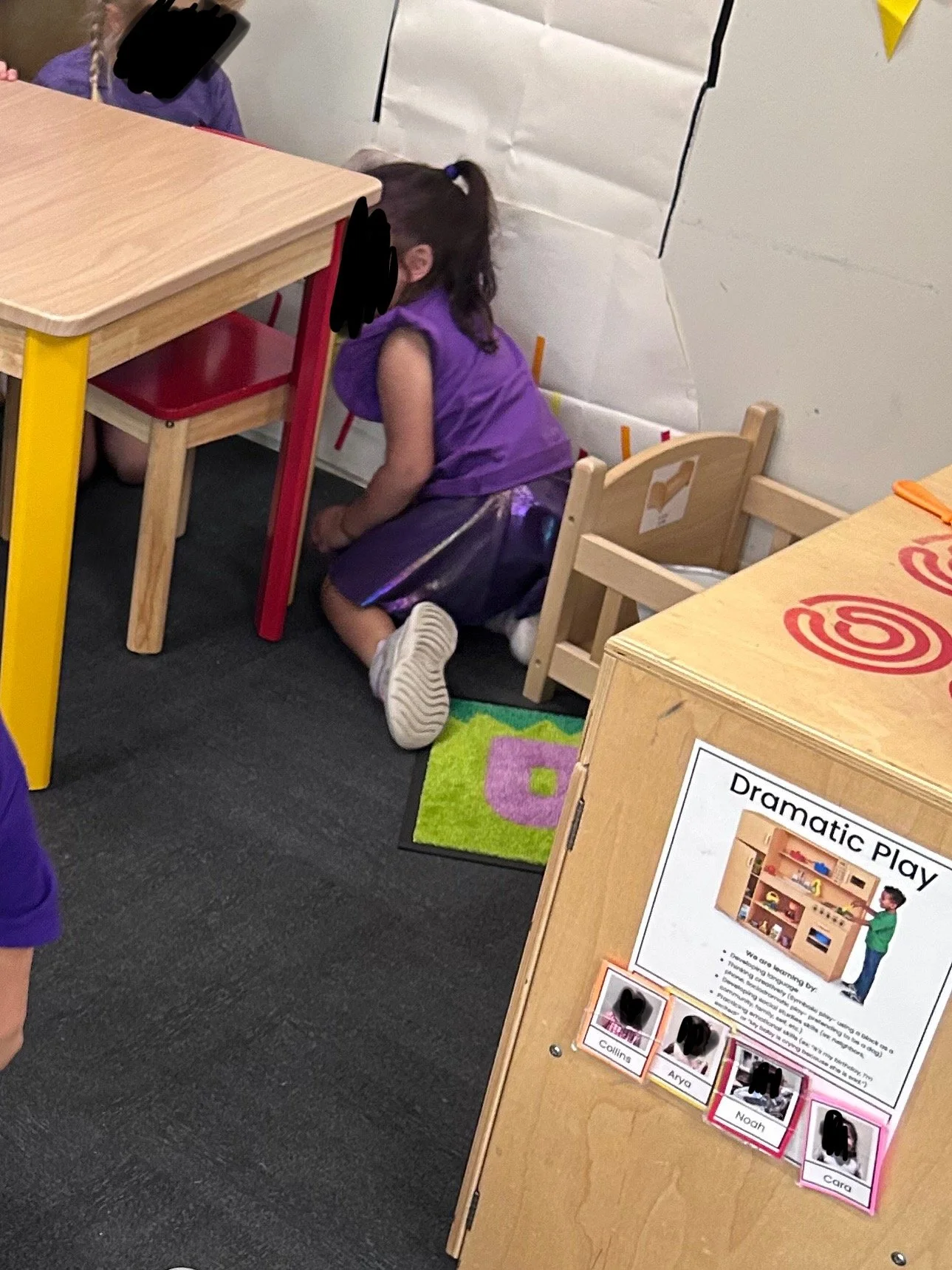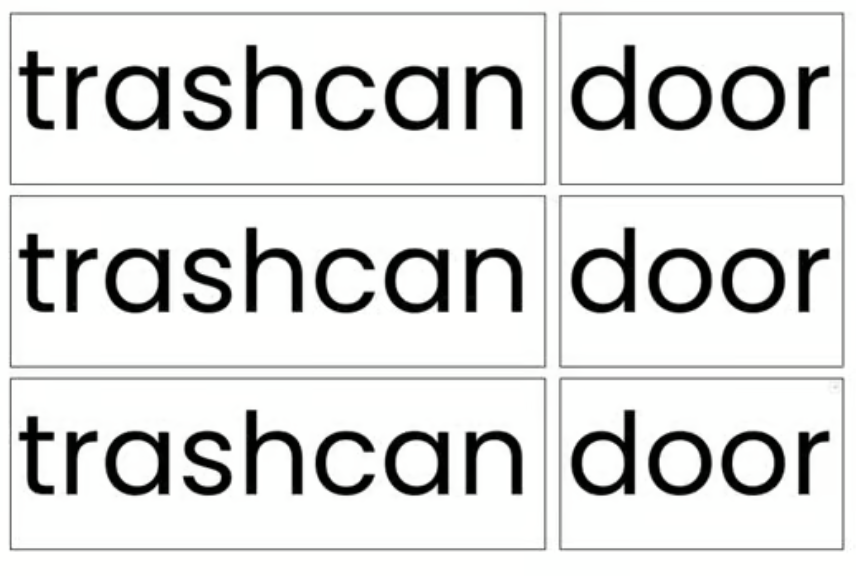Back to School Preparation
In inclusive early childhood education (IECE) classrooms, you'll often have a mix of students’ ages, abilities, and experiences. It’s common to see three-year-olds, four-year-olds, and even five-year-olds whose birthdays just miss the cutoff for kindergarten. These classrooms can also include anywhere from 0% to 49% of students with Individualized Education Programs (IEPs). While best practice recommends a 70/30 ratio for inclusion (70% general education students and 30% students with IEPs), some classrooms may end up closer to a 50/50 split.
On top of that, children bring a wide range of backgrounds and skill levels with them—varying levels of independence, social exposure, home languages, and lived experiences. These differences are what make inclusive Pre-K classrooms so dynamic and inspiring.
That being said, it can feel overwhelming to prepare, differentiate, and plan when you haven’t even met your students yet. It can also feel stressful to not have anything prepared beforehand, when we often aren’t given enough time to prepare everything before we start our school year. To help ease that stress, I’ve shared several of the key materials and resources I prep ahead of time so I can start the year feeling confident and ready—even before students walk through the door.
Check out the links below for more details and to download each resource!
Newsletters can feel like a never-ending task—and sometimes, just another item on your to-do list. That’s why I created a full year of editable newsletter templates, already mapped out for you. I’ve worked in schools with both monthly and weekly newsletter expectations, so I designed this resource to work for either.
For weekly newsletters:
I use the same format and style throughout each month. After creating the first newsletter of the month, I simply duplicate it four times, update the dates, and make any content tweaks needed. This saves time and keeps things visually consistent for families.
For monthly newsletters:
There’s one unique design for each month, starting in August and ending in June, with two design options for December. If you're sending monthly updates, just change the title from “Weekly Update” to “Monthly Update,” or delete the title altogether—it’s fully editable!
Bonus tips:
Under the "Contact" section, I like to include my class Instagram handle, Remind App details, and Seesaw connection info. These sections are also editable, so you can add whatever communication tools your class uses.
Meet the Teacher
Two Editable Meet-the-Teacher Front and Back
Meet-the-Teacher Letter: A Warm Welcome and Helpful Resource
Whether your school hosts a traditional Meet-the-Teacher event or not, sending a welcome letter ahead of the school year is a great way to connect with families early. I typically email parents with a warm introduction to our class and include this letter as an attachment. During our Meet-the-Teacher event, each student receives a folder filled with helpful resources—this letter included as a printed copy.
This letter isn’t just informative for parents—it’s also a great way to help students start building excitement and familiarity by seeing their teacher’s picture before the first day. Plus, it provides an easy reference for anyone involved in your child’s daily routine, like grandparents or babysitters who might help with drop-off and pick-up. It’s a great way to create a smooth start for everyone!
Making Meet-the-Teacher Interactive
One of my favorite parts of Meet-the-Teacher night is the Classroom Scavenger Hunt! Inside each student’s welcome folder, I include a simple scavenger hunt sheet that guides them through various areas of our classroom—centers, supplies, the bathroom, and more. At each stop, there’s a sticker they can collect and place on their sheet.
This activity turns the evening into an adventure. It gives students a fun and purposeful way to get comfortable in their new space, and helps ease first-day jitters by building familiarity. It also keeps parents and families engaged as they walk around the room together, making it a meaningful experience for everyone involved.
Centers
Setting up Center Time: Learning Through Play
In my Pre-K classroom, center time is one of the most important parts of our day. It’s more than just play—it’s a thoughtfully structured period that helps children grow socially, emotionally, and academically through hands-on, self-directed experiences.
Description
At the beginning of the school year, we spend time teaching expectations and routines that help center time run smoothly. This includes how to pick a center, how many students can be at each center, and how to care for materials and each other. We do a lot of role playing to model these expectations.
To support this, I use visual center signs with Velcro to show how many students can play in each area. Each child has their own picture that they place on the sign of their chosen center. When a center is full, they learn to find another option or ask a friend for a turn—helping them practice patience, flexibility, and problem-solving.
We also establish three important rules:
We are only in charge of our own picture—we don’t touch anyone else’s.
We must clean up before moving to a new center.
If a center is full, we either wait, ask politely, or choose something else.
These routines create a predictable and safe environment where children feel empowered to explore. They know what to expect, which frees them to be creative and take risks in their play. You can read more about my thoughts on learning through play in my specific blog all about centers.
Daily Schedule
Schedule
Setting a schedule helps your students know exactly what is happening and what to expect throughout the day. As you can see in the photo, I create all of my schedule cards, laminate them, and glue a magnet to the back. I use a wet erase marker to write the time for an easy way to may changes to your schedule. I also assign a student to be the “Schedule Keeper,” and their job is to come up and say, “Math is over, it’s time for snack.” This routine builds language skills and helps students keep track of the day and what’s coming next.
You can download this pack with a blue background, white background, or a completely editable version that allows you to add your own images and wording. The complete versions include several wording options (for example, you might call “learning through play time” either centers or play time), so I’ve provided multiple versions to meet different classroom needs.
Para/Assistant Teacher Schedule
Assistant Teacher Schedule
Managing adults can be one of the most challenging parts of our roles, and this tool eliminates the guesswork and “mind reading” that often happens unintentionally.
This fully editable schedule template is designed to help you organize your day, set clear expectations, and ensure that your entire team stays aligned.
Page 1 offers a simple, one-page overview of the daily schedule. I like to print multiple copies and post them in various areas of my classroom for quick reference.
Page 2 and beyond provides a detailed, step-by-step breakdown of everyone’s roles throughout the day. This is especially helpful at the start of the school year when I meet with my assistant teachers/para-educators to walk through the daily routine, answer questions, and fill in pieces I might have overlooked. It outlines what both students and staff should be doing during each segment of the day.
It also comes in handy when service providers ask for your schedule to determine the best time to deliver minutes to your students—you’ve already got it ready to go!
Calendar
Early Childhood Printable Pocket Calendar Set
Calendar time is a foundational routine in the early childhood classroom. It helps young learners build an understanding of time concepts such as yesterday, today, and tomorrow, the days of the week, and number recognition. This hands-on, printable pocket calendar set is designed to make that learning engaging and accessible for all students.
What’s Included:
12 monthly header cards with matching images to coordinate with my newsletter templates
Number cards 1–31
“Yesterday,” “Today,” and “Tomorrow” cards
Year cards for 2025 - 2028
Days of the week (7 cards)
31 holiday/seasonal event cards
The 4 seasons
“First Day of School” and “Last Day of School” cards
8 “Birthday” cards
“Special Visitor” and “Field Trip” cards
A blank black card (use with wet-erase markers to write in custom events)
How I Use It:
I print two sets of the number cards (1–31):
One on yellow to represent home days
One on blue to represent school days
I glue the matching numbers back-to-back (e.g., yellow 1 to blue 1), then laminate them. This makes it easy to flip the card based on whether the date falls on a school day or a weekend. Each month, I simply reset the calendar by flipping the cards accordingly.
All other pieces are printed on white cardstock, cut, and laminated for durability and repeated use year after year.
Want to Individualize?
Also available in my TPT store are editable individual student calendars—designed at standard paper size and matched visually to this pocket calendar. These are perfect for students who benefit from hands-on, individualized visual supports during calendar time.
Weather/Seasons
Weather & Seasons Printable Chart
Understanding weather and seasons is a key concept taught during early childhood because it helps students develop awareness of the world around them. Through these activities, students learn about:
Hot and cold temperatures
Appropriate clothing choices for different types of weather
Types of weather (sunny, rainy, snowy, windy, etc.)
The cause and effect of weather patterns
The four seasons and the weather typical of each
These lessons build a foundation for independence as children begin to make decisions about how to dress for the day and recognize environmental cues.
What’s Included:
Six printable weather cards
Four printable temperature cards
Five printable season cards (choice of fall/autumn)
Charts to attach the cards to
How I Use It:
In my classroom, we have a student job called the "Meteorologist." Each day, this student checks the weather outside and updates our class weather chart using the included cards while we sing our weather song. This daily task not only reinforces the concept but builds confidence, responsibility, and language skills.
Bonus Resource for Individual Support:
For students who benefit from more hands-on, individualized learning, I also offer a Printable Individual Weather Calendar (available in my TPT store). This supports students who need help staying engaged during whole-group lessons and allows them to actively participate at their own level.
How I Organize It:
I keep this resource in the same 3-ring binder as the Individualized Calendar Chart mentioned above. This binder becomes a central place for all supports a student might need throughout the day. In addition to the weather and calendar materials, I also include:
A feelings check-in chart
Any relevant visual supports for behavior, routines, or communication
The student’s individualized schedule (if applicable)
This setup helps ensure that everything is in one place, making it easy for both the student and any adult working with them to flip directly to the resource they need in the moment. It supports consistency, promotes independence, and helps reduce transition-related stress.
Environmental Print
Build Print Awareness in Early Learners
There’s nothing sweeter than hearing a three-year-old proudly exclaim, “I can read that! It says ‘door!’”
Are they truly reading? Not quite—but this is exactly where reading begins. They’re learning that words have meaning, that print represents real things, and that text is everywhere in their environment.
These are the early building blocks of print awareness, a foundational skill for developing readers. Please enjoy 11 pages of classroom labels and support your student’s early reading development. This free printable includes for common objects and areas such as: desk, sink, chair, table, paper towels, and many, many more!
These simple, bold labels are designed to be taped directly onto items around your classroom—no prep beyond printing and cutting!
If you made it to the end—thank you! I hope you found these resources helpful and easy to use in your classroom. Please don’t hesitate to email me with any questions, feedback, or suggestions—I love hearing from fellow educators.
I also hope you're enjoying a bit of rest this summer and not spending all your time prepping! But if you're like me and feel better getting a few things ready ahead of time, these materials are a great place to start. Wishing you a smooth, organized, and joyful start to the school year!













